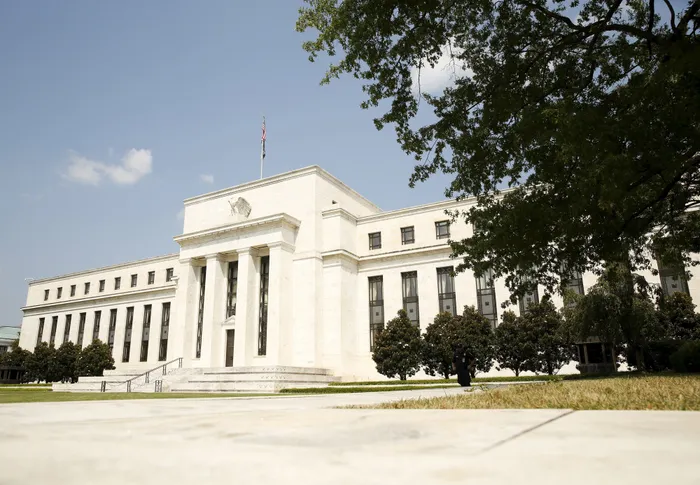US inflation data enhances uncertainty in financial markets - Chris Harmse

Analysts and economists anticipate that if the US inflation rate reaches 3.0%, the US Federal Reserve is likely to decrease its Bank rate at its next meeting in November.
Image: File
US inflation data is better than expected. Most global financial markets moved sideways and uncertain last week in anticipation of the US inflation rate data that was released on Friday. Expectations were that the annual increase in the US CPI would be 3.1% in September, higher than the 2.9% annual inflation rate increase in August. Analysts and economists anticipate that if the US inflation rate reaches 3.0%, the US Federal Reserve is likely to decrease its Bank rate at its next meeting in November.
The US announced on Friday that its annual inflation rate in September has risen by 3.0%, the highest level since January. Energy prices rose 2.8% in the year, the most since May 2024. Annual core inflation slowed to 3% from 3.1%, with markets expecting it to stay at 3.1%. Given the lack of US non-farm job data due to the continuing of the US government shutdown, uncertainty prevails on the possibility of a cut in interest rates by the Fed at its meeting on Wednesday. The US dollar remains under pressure but equity prices on Wall Street welcomed the better inflation rate data and ended the week stronger. The Dow Jones Industrial index ended the week 2.2% higher, The S&P500 advanced by 1.9% and the Nasdaq gained 2.3%.
South Africa’s inflation rate, share prices and the Rand
Statistics South Africa last Wednesday announced that South Africa’s annual inflation rate during September increased marginally to 3.4%. This is in line with expectations and marginally higher than the 3.3% annual inflation rate in August. This rate, however, increases expectations that the Monetary Policy Committee (MPC) of the SA Reserve Bank (SARB) will not lower its repo rate at its next meeting in November. Although 88% of South African fund managers expected that the next move by the MPC will be a repo rate cut, 55% of them expect it not to be at the November meeting. In its Monetary Policy review for October 2025, the SARB concluded that: The global environment, however, remains highly uncertain due to ongoing tariff risks to inflation and geopolitical tensions. Major global central banks have cut rates, and markets expect further modest reductions later this year, even though inflation remains elevated in some major economies.The Bank in its report announced that the MPC now targets a 3% inflation rate target. The report emphasises that: “Inflation expectations, unit labour costs (ULCs) and core inflation appear to be robust to typical inflation shocks.
Looking ahead, headline inflation is projected to rise in the short term, averaging 3.6% in 2026, before easing towards the 3% objective by the end of the forecast period.”
On the JSE equity prices moved mostly sideways as precious metals came under some selling pressure. The all share index index ended Friday only 292 points (0.20%) lower than the previous Friday. The gold price lost $124 per ounce last week, closing Friday on $4 127, the platinum price traded stronger with $9 on $1 619 per ounce on Friday while the palladium price traded lower by $35 since the previous Friday on $1 456.
In reaction, the Resources 10 commodity index lost 6.9% over the week. Although the Rand exchange rate remained sideways around R17.30/$ to R17.40/$ for most of last week, the currency improved strongly on Friday on the higher US inflation rate announcement. Against the US dollar the Rand traded on Friday at the close at R17.25/$. This is 12 cents stronger than the R17.37/$ level of the previous Friday. Against the UK/£ the currency appreciated sharply with 36c to R22.96/£ last week and against the Euro the currency traded stronger with 22c to close Friday on R20.08/€. The news that South Africa was scrapped from the gray list or dirty-money list by the Paris based Financial Action Task force on Friday also contributed to the Rand moving stronger.
Prospects for this coming week
This coming week alle eyes will be on the release of the producer inflation rate data for South Africa during September on Thursday. It is expected that the PPI in South Africa had increased on an annual basis by 2.2%. This is higher than the annual increase in the producer inflation rate of 2.1% recorded for August. On global markets the US Federal Reserve’s Federal Open Market Committee (FOMC) will release its interest rate decision during a press conference on Wednesday. The ECB in Europe will announce its interest rate decision for the Euro area on Thursday.

Chris Harmse is the consulting economist of Sequoia Capital Management and a senior lecturer at Stadio Higher Education.
Image: Supplied
Chris Harmse is the consulting economist of Sequoia Capital Management and a senior lecturer at Stadio Higher Education.
*** The views expressed here do not necessarily represent those of Independent Media or IOL.
BUSINESS REPORT